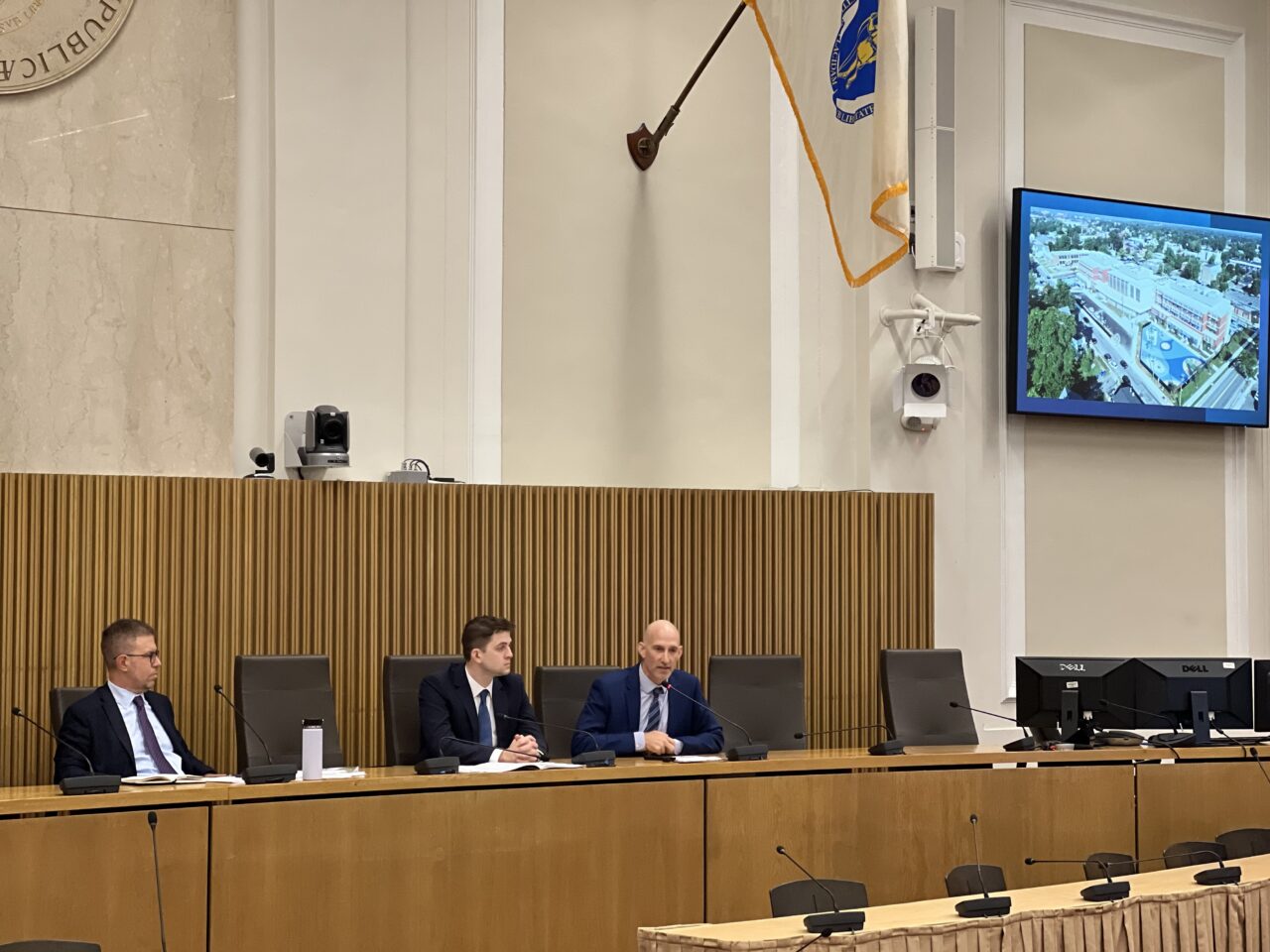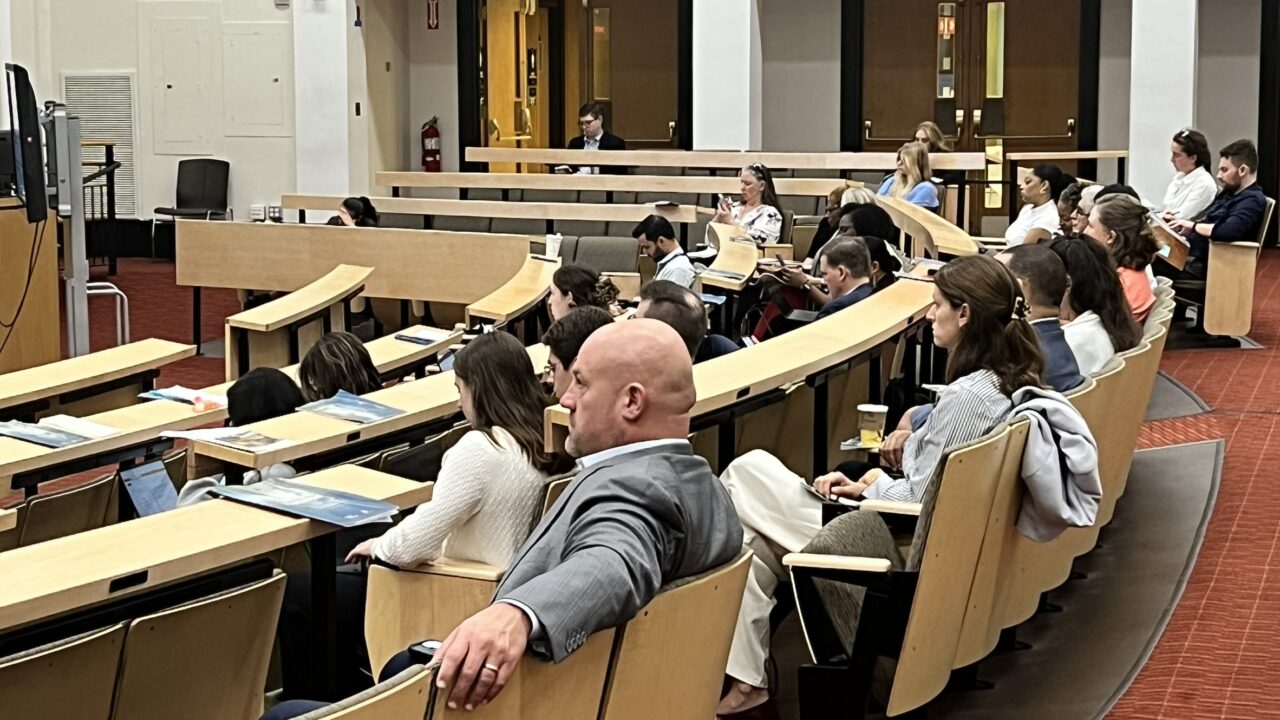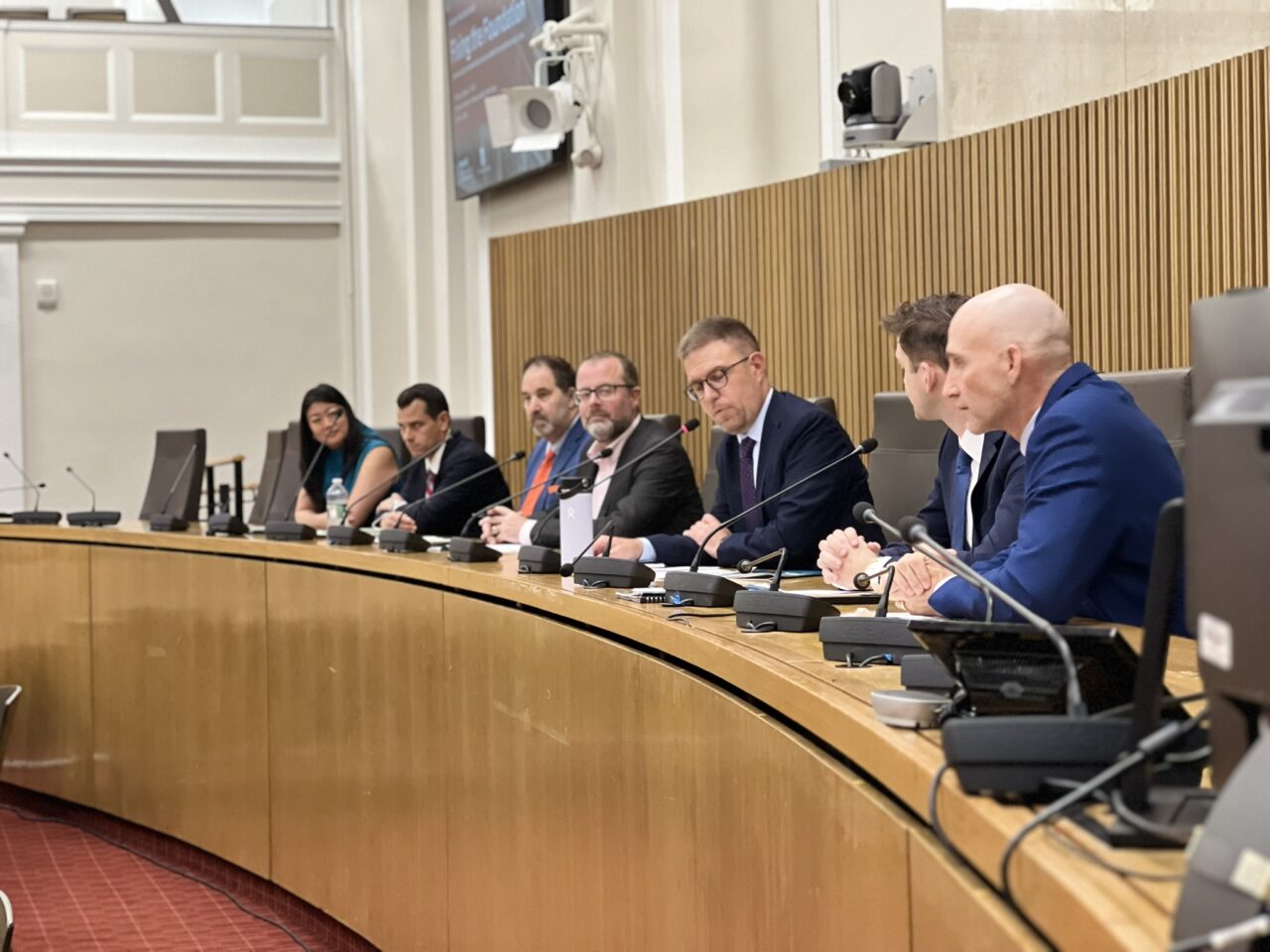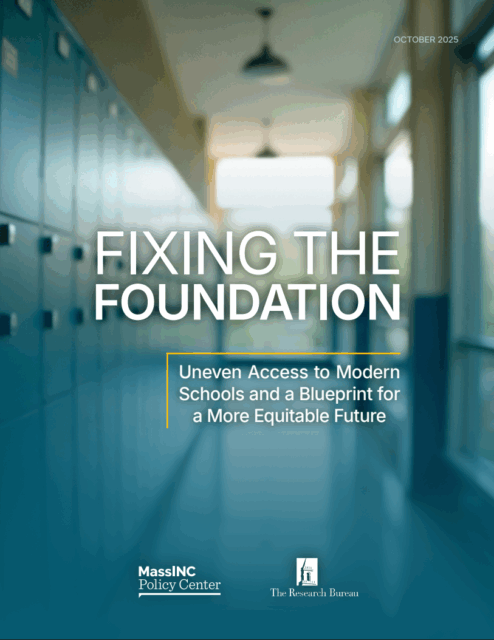On October 7, policymakers, educators, and infrastructure leaders came together at the Massachusetts State House to hear the findings from Fixing the Foundation: Uneven Access to Modern Schools and a Blueprint for a More Equitable Future. The latest report from the MassINC Policy Center, in partnership with the Worcester Regional Research Bureau, highlights deep inequities in access to modern school facilities across Massachusetts. The event featured a panel discussion on the urgent need for policy reforms to ensure every student learns in a safe, healthy, and inspiring environment.

Paul Matthews, Executive Director and CEO of the Worcester Regional Research Bureau, welcomed attendees and emphasized the importance of data-driven solutions to meet the pressing facility needs of urban districts.
State Representative Rob Consalvo offered greetings on behalf of the Massachusetts House of Representatives, underscoring the Massachusetts School Building Authority’s (MSBA) critical role in helping cities like Boston modernize aging schools. Highlighting projects such as the Dearborn STEM Academy, Boston Arts Academy, Josiah Quincy Upper School, and the Carter School, he commended the partnership between the City of Boston and the MSBA in ensuring every student has access to modern, inclusive learning environments. Consalvo also noted Boston’s commitment to rebuilding Madison Park Technical Vocational High School in Roxbury, calling it a historic opportunity for Boston students.
Research Presentation: The State of School Infrastructure
Ben Forman, Research Director at the MassINC Policy Center, and Anthony Clough, Research Associate at the Worcester Regional Research Bureau, presented findings from Fixing the Foundation, which analyzed nearly a decade of data from the MSBA. Their research revealed that Boston and Gateway Cities—home to many of the Commonwealth’s oldest and most overcrowded schools—are the least likely to receive MSBA funding for large-scale reconstruction or renovation projects. Suburban districts, by contrast, remain overrepresented.

Clough explained that while Boston schools are five times more likely than the state average to have low overall learning environment ratings, they receive fewer project invitations. The data showed that two-thirds of MSBA-funded schools from 2015–2024 were rated in good condition, while many of the state’s most deteriorated buildings were left unaddressed. The analysis also found deep racial and economic disparities: Black, Hispanic, and low-income students are significantly more likely to attend schools without libraries, science labs, or art rooms.
Forman emphasized that these gaps reflect broader inequities in access to opportunity. He shared two case studies from the report: the Peck School in Holyoke, a 21st-century building with limited space and resources despite a strong local effort, and the DeBerry-Swan Elementary School in Springfield, located in a historically redlined neighborhood where new construction alone hasn’t improved community conditions or academic outcomes. Both examples highlight the need for coordinated, equity-focused investments that connect school design to neighborhood development.
To address these challenges, the report outlined a series of policy recommendations:
- Increase MSBA funding and prioritize inadequate buildings.
- Reexamine reimbursement policies to increase equity and more effectively support high-need districts.
- Ensure that the next facility conditions survey provides an objective and transparent benchmark for adequacy.
- Require municipalities to co-invest with the state when buildings are deemed educationally inadequate.
- Reimburse for the educational use of co-located facilities and offer incentive points to encourage agencies to bridge silos.
- Help urban districts build regional magnet schools that increase racial and economic integration.
- Provide greater support for feasibility studies, master plans and long-term stewardship.
Download slides from the Presentation
Panel Discussion: From Data to Action
Following the presentation, Paul Matthews moderated a panel featuring Mayor Jared Nicholson of Lynn, Superintendent Andrew O’Leary of New Bedford Public Schools, Jessica Tang, President of the American Federation of Teachers Massachusetts, and John Nunnari, Executive Director of AIA Massachusetts.

Panelists spoke candidly about the realities of educating students in century-old buildings. Mayor Nicholson noted that many Lynn students attend schools built before World War I, with overcrowding forcing the city to convert commercial spaces into classrooms. Superintendent O’Leary described similar challenges in New Bedford, where schools designed decades before modern inclusion standards cannot adequately serve today’s diverse student population.
Jessica Tang underscored how inadequate facilities directly affect students’ health and learning—citing issues such as poor air quality, mold, and a lack of playgrounds or libraries in urban schools. She called for an equity-driven approach to school construction and highlighted the need for bridge funding to help under-resourced districts meet federal and state sustainability goals.
From the design perspective, Nunnari noted that the MSBA’s framework, last overhauled two decades ago, no longer reflects today’s construction realities or educational needs. He urged legislators to modernize the program’s rules and reimbursement policies to ensure long-term maintenance, efficiency, and sustainability.
Senator Brendan Crighton closed the event by highlighting the critical state of school infrastructure in Massachusetts, particularly in Lynn, where many schools are more than 100 years old and face overcrowding and inadequate facilities. He noted that while the state has made progress through the Student Opportunity Act and investments in community colleges, operational funding and quality teaching are not enough if students are learning in deteriorating buildings. Crighton called for urgent action to align state policy with the constitutional guarantee of equal education and thanked educators, policymakers, and advocates for their shared commitment to this work.
Read the Full Report
The discussion at the State House underscored how outdated and unequal school facilities hold back students across Massachusetts, but the data tell the full story. Fixing the Foundation: Uneven Access to Modern Schools and a Blueprint for a More Equitable Future takes a closer look at where resources are falling short and outlines actionable policy recommendations to ensure every child learns in a modern, healthy environment.
Dive into the report to explore the full findings, maps, and case studies that show how facility inequities impact opportunity and what it will take to fix them.
In the News
Read articles below to see reactions on the report’s findings.

